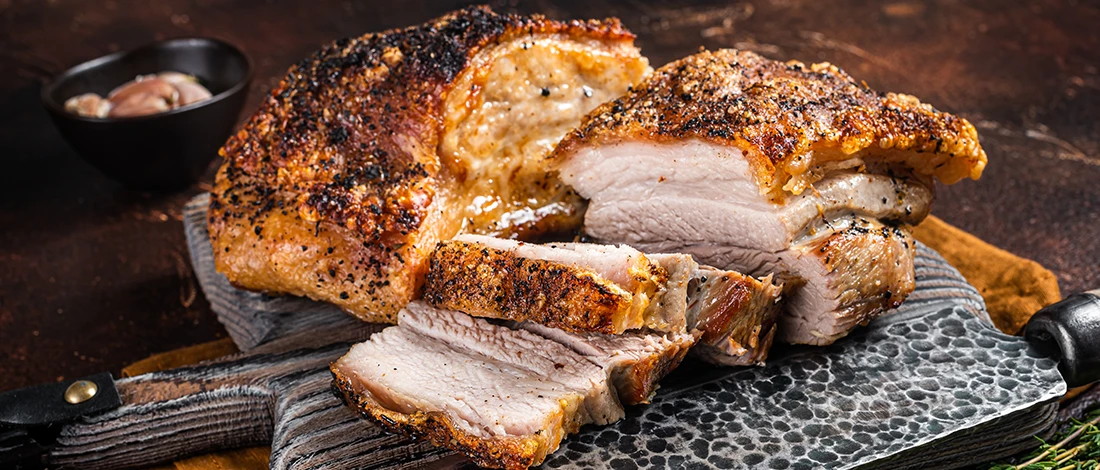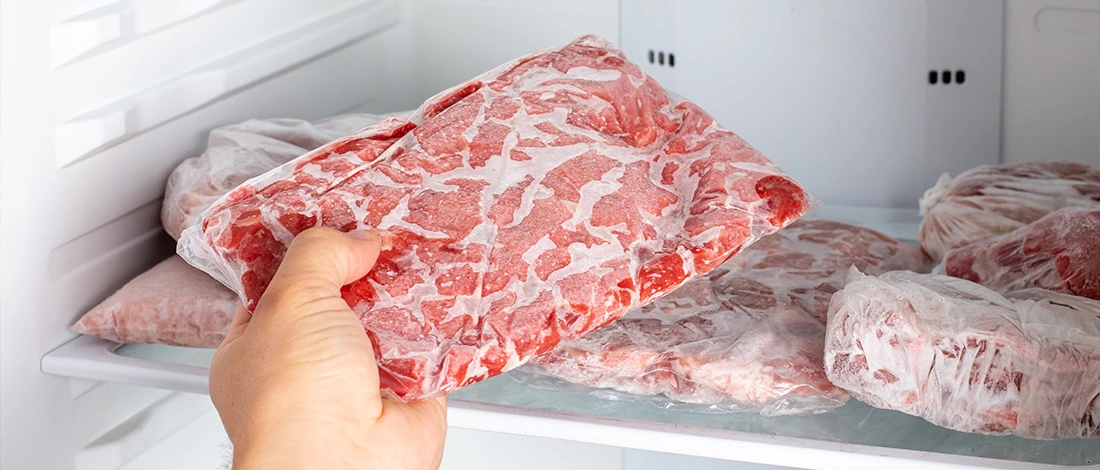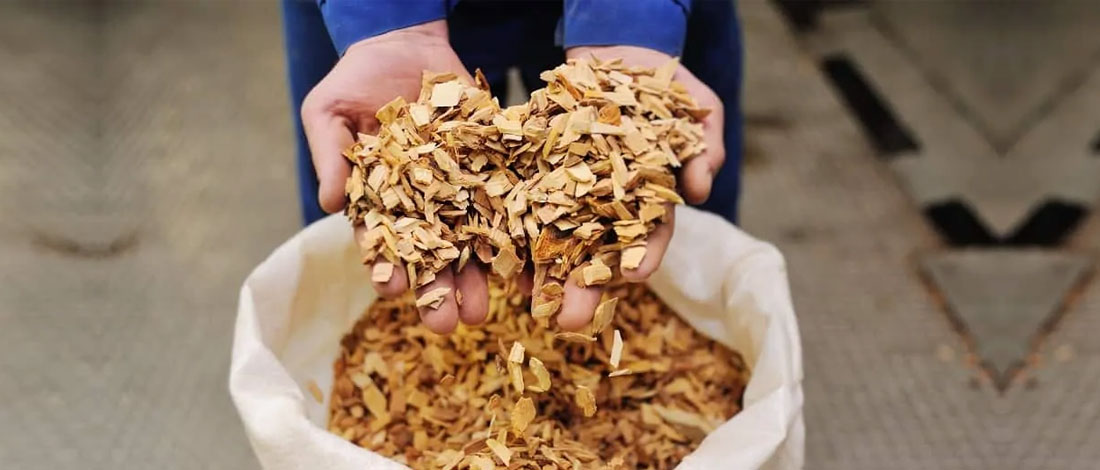Steaks are my favorite meat cut, and during the decade I’ve been on a carnivore diet, I’ve probably eaten hundreds of them.
At first, I thought cooking steaks would be easy. However, I had to talk to chefs, restaurateurs, and avid grillers to be sure I was cooking steak correctly.
I’ve spent years perfecting all levels of steak doneness, and today, I’ll share all my tips and tricks on how to cook different steaks.
Let's dive into the culinary techniques that will elevate your steak game to professional levels.
Quick Summary
- There are six different levels of cooking steak: Bleu, Rare, Medium-Rare, Medium, Medium-Well, and Well-Done, each requiring different cooking times and temperatures.
- The level of doneness affects the steak's texture, flavor, and juiciness, with Bleu being the rawest and Well-Done being the most cooked and often considered overdone.
- Using a meat thermometer can help achieve the desired level of doneness, ensuring the steak is cooked safely and to the consumer's preference.
- If you’re looking for a reliable meat supplier, we’ve got a round-up of 11 best meat delivery services. Each of these suppliers sells sustainably sourced meat without any hormones or additives.
What Levels of Cooked Steak Are There?
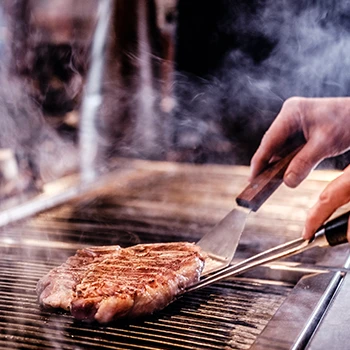
Steak cuts can be of different thicknesses, which requires different cooking steak times, so treat all time guidelines as recommendations, not rules.
Note: USDA recommends that steak be cooked at an internal temperature of 145 degrees for consumer safety [1]. However, research shows that steak cooked at lower temperatures is still safe to eat [2].
The best way to cook a steak is on a grill or in a pan on high heat. This allows you to sear the outside of the steak and trap the juices inside.
Here are different levels of cooked steak:
1. Bleu
Bleu (blue) steaks come from French cuisine. This is a raw steak, or just shy of being completely raw. Out of all the levels of doneness, blue steak is the rawest steak. It’s also one of the hardest steaks to cook successfully.
This steak is called blue because it first has a bluish purple color. Then blue steak changes to red when you expose it to air.
You should cook blue steak cold, at a high temperature for a very short time — about a minute per side and several seconds on the edges to get a slight sear. Cook blue steak at 115 degrees.
It’s fine if the blue steak insides look red and raw. In fact, that’s the purpose. The blue steak can be tough to chew, and the interior may not even be warm.
Many people fear getting sick from blue steak because it’s raw.
However, blue steak is safe to eat if you seal it before eating. It’s also cooked just enough to get rid of any bacteria on the meat's surface.
2. Rare
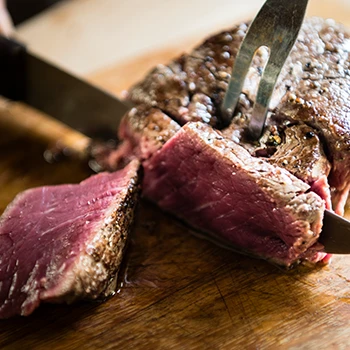
Rare steak is cooked only slightly longer than blue steak — about 60 seconds more. You should cook this steak for two minutes per side and several seconds on the edges to get raw steak doneness.
The steak’s inside should be about 75% red, with some blood oozing out. The outside of the rare steak should be lightly charred and darkened. The sides should be light brown, and the middle should be cool and red.
Overall, rare steaks should be hot on the outside and cool or slightly warm on the inside. The steak’s internal temperature should be 120 degrees.
Rare steak is completely safe to eat as long as the internal temperature reaches 120 to 130 degrees and the raw meat is sealed before cooking steak.
3. Medium-Rare
This is the recommended level of doneness for steak. It’s also one of the trickiest steaks to cook because the steak should have a light pink center with browned sides and caramelized top and bottom with grill marks.
A medium-rare steak should have a firm surface and a little give toward the middle. Cook this steak for 4 minutes per side until its internal temperature is 130 to 140 degrees.
You should let a medium-rare steak rest after cooking. This allows the steak to lock in juices and flavors.
Resting time for this type of meat depends on the steak thickness, but the rule is 10 to 20 minutes for a medium-rare steak.
4. Medium
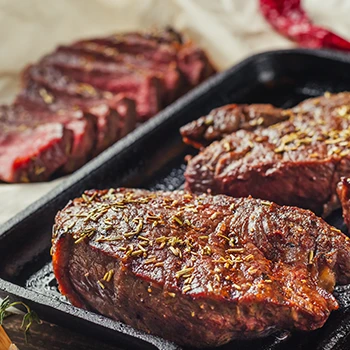
Next to medium rare, medium steaks are among the most popular red meat cuts.
Cooking a medium steak is harder than any of the previous stages of doneness. You should cook it for five minutes per side so that the inside has a strip of pink through the middle.
There should be more brown and less pink meat for a medium steak. The sides should be brown, and the top and bottom should be charred. There should also be some juices flowing, but not too much.
The right medium steak temperature should be 140 degrees. This steak is less tender than a medium-rare steak and feels firm to the touch.
5. Medium-Well
Medium-well steaks have a hint of pink in the middle, a dark brown surface, and charred top and bottom. Medium-well steak shouldn't have any red, unlike its medium steak counterpart.
Medium-well steak has a texture that resembles leather. It’s stiff with a little give in the center. This steak is dry and chewy and doesn’t have a strong beefy taste.
You should cook medium-well steak at a high temperature for seven minutes on one side. Then turn and cook for five more minutes.
The cooking process is done when the steak reaches 155 to 165 degrees.
6. Well-Done

Well-done steak is the driest and chewiest steak of all. It’s often referred to as overdone by chefs and grill masters. This steak has a bad reputation, and some chefs even refuse to cook it.
You may think well-done steak is the easiest to cook.
Actually, it’s the hardest of all to get a perfect steak that’s well-done because it’s difficult not to dry it out. You should cook well-done meat low and slow to make sure it doesn’t burn and that it’s cooked through the middle.
These steaks shouldn’t have any pink on the inside. The right color is gray-brown. The meat feels firm to the touch.
Cook well-done steaks for 10 to 12 minutes per side until their temperature is 170 degrees or higher.
This is the only steak you should cook at a lower temperature to prevent burning. Cook it at medium heat instead of high.
Pro tip: Sear the steak on the outside, then broil for 8 minutes per side so it’s completely brown and you get a crispy exterior.
How to Use Meat Thermometer for the Right Doneness?

Here’s how to use a meat thermometer step-by-step to get the right doneness:
- Choose an instant-read thermometer to get an accurate reading.
- Slide the meat thermometer towards the center of the entire steak, away from the fat and bone.
- Check the center temperature.
“Place the food thermometer in the thickest part of the food. It should not touch bone, fat, or gristle. Start checking the temperature toward the end of cooking before you expect it to be done. Be sure to clean your food thermometer with hot soapy water before and after each use.”
- USDA
Pro tip: Steaks continue cooking even after you remove them from heat because of residual heat. For example, if your final temperature is 160 degrees, remove the steak when it reaches 155 degrees.
Related Articles:
FAQs
What Is Lower Than a Rare Steak?
Blue rare is lower than a rare steak.
Is Rare Better Than Medium-Rare?
No, rare isn’t better than medium rare. It’s a matter of preference. Some people like steaks cooked rare because they are juicier, while others prefer the latter.
Why Do Chefs Like Medium-Rare?
Chefs like medium-rare because it’s a good way to bring out the meat’s flavor and retain steak moisture.
References:
- https://www.usda.gov/media/blog/2011/05/25/cooking
- http://news.bbc.co.uk/2/hi/health/3743657.stm

